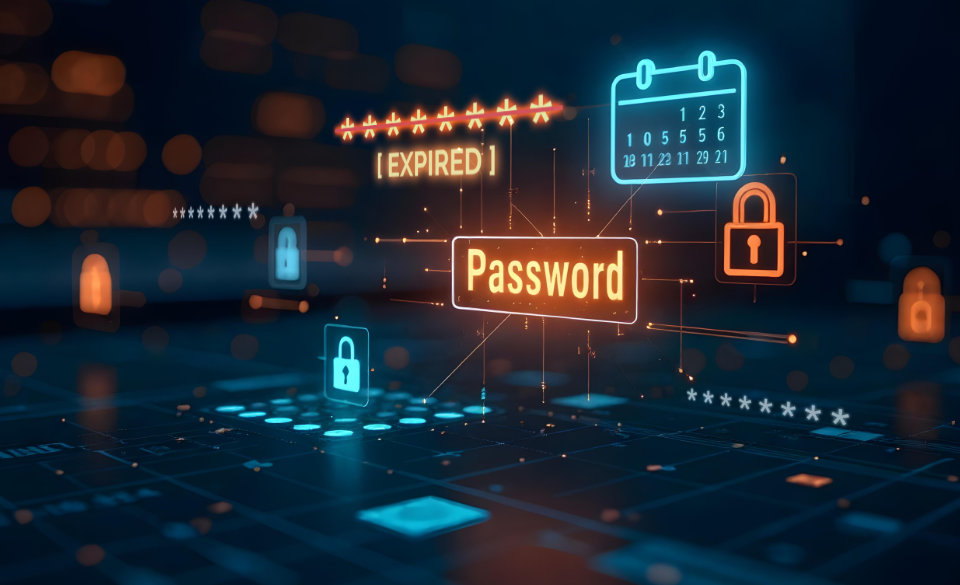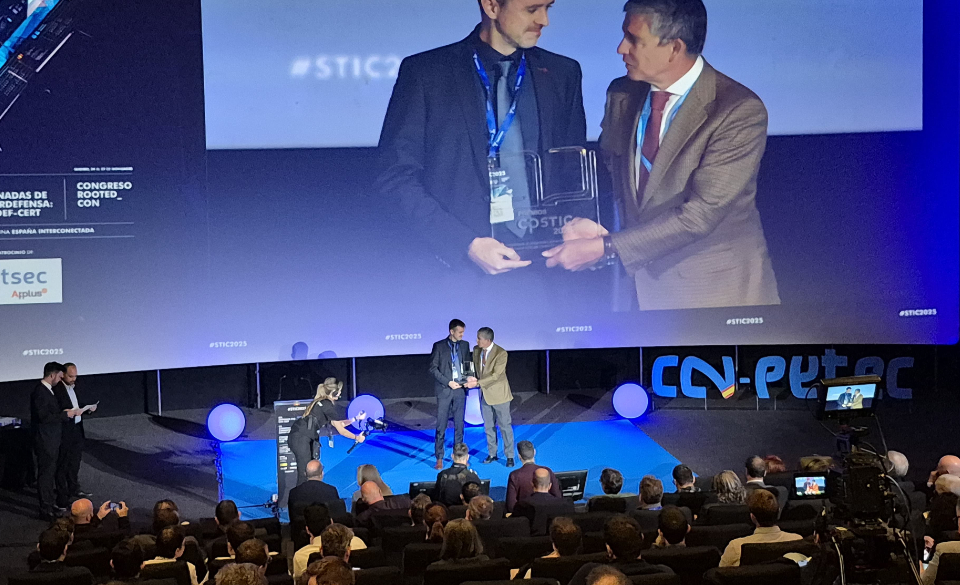
Least Privilege Enforcement (LPE): A Technical Foundation for Secure and Sustainable Access Management
31 de July de 2025
Security in OT Environments for Water Management
14 de August de 2025Automated password rotation and centralized management are no longer best practices, they are fundamental requirements for any mature cybersecurity architecture. In an environment where credential theft has become one of the most commonly used attack vectors by malicious actors (both external and internal), any protection policy must start by reducing the exposure surface derived from privileged identities and service accounts. And it’s not enough to protect passwords: their lifecycle must be automated, their use isolated, and they should never even be visible to human operators.
Technical Foundations of Automated Password Rotation
Automated rotation involves replacing credentials at regular intervals or in response to specific events (e.g., role changes, session termination, or detection of anomalous activity). Technically, this requires an automation layer capable of:
- Connecting to target systems (servers, databases, network devices, etc.) using APIs, remote management protocols, or CLI/SSH interfaces.
- Generating new strong passwords following corporate policies (length, complexity, uniqueness, etc.).
- Validating the success of the credential change.
- Securely updating stored secrets in the vault.
- Notifying, logging, and auditing each step of the process.
This process must be seamless and non-disruptive, integrating with CI/CD pipelines, hybrid environments, and legacy systems. To prevent failure points, it’s crucial to implement fallback mechanisms (e.g., in case the rotation fails and system access is blocked) and ensure proper synchronization with all services dependent on the credential.
Why Static Passwords Are a Systemic Threat
Using static passwords is equivalent to handing over a master key with no expiration date. This practice goes against any serious security policy. The risk isn’t just that they might be stolen (via phishing, malware, or leaks), but that their legitimate use, if left uncontrolled, can lead to a chain of abuse without traceability.
An attacker with access to a valid credential doesn’t need to breach the system, they’re already inside. And if the credential is shared, unrotated, and unlogged, detecting the compromise or reacting in time becomes very difficult. Periodic rotation forces any malicious actor to “steal the password” repeatedly, drastically shortening the useful lifespan of a compromised credential.
Technical Advantages of Centralized Credential Management
Before deploying automated rotation, it’s essential to consolidate secret management into a secure, centralized repository (also known as a “vault“). This vault must act as a single authority for access, ensuring that no password travels or is stored locally, and all accesses are mediated.
Key technical benefits include:
- Reduction of Shadow IT: Requiring all access to be registered prevents unauthorized or poorly managed credentials.
- Elimination of direct password knowledge: Users don’t know the actual password; instead, they access systems through controlled jump platforms or proxies.
- Centralized auditing: All events related to credential use are logged in one place, facilitating compliance and incident response.
- Consistent policy enforcement: Password length, complexity, and expiration are managed from a single console across all systems.
Advanced Rotation Mechanisms and Practical Considerations
An advanced automated rotation architecture must adapt to various environments and types of secrets. Let’s dive into the technical components required for this process to work correctly:
1. Rotation Engine
This component automates the password lifecycle. Its implementation varies depending on the credential type and the target system. For example:
The engine must be modular, extensible, and support multiple protocols, from RDP, SSH, and HTTPS to SNMP or Telnet in legacy environments.
2. Secure Vault
The vault is the core where credentials are stored, encrypted, and protected. Key features include:
- Encryption at rest and in transit, using standards like AES-256 and TLS 1.3.
- Granular access control by role and context.
- Secret versioning, to allow rollback if needed.
- Integration with identity management systems (LDAP, Azure AD, SAML, etc.).
The vault manages not just passwords but also SSH keys, API tokens, TLS certificates, and ephemeral secrets (like JIT credentials).
3. Access Proxy or PSM (Privileged Session Manager)
This component acts as an intermediary between the user and the target system. The goal is that the user never sees or touches the password. Instead:
This model not only prevents password leaks but also enables session recording, monitoring, and auditing.
4. Integration with Events and Incident Response
A mature rotation and secrets management platform should integrate with detection and response systems (SIEM, SOAR, or XDR). This enables events such as:
- Anomalous login attempts.
- Geographic or temporal context changes.
- Unexpected privilege escalation.
…to automatically trigger immediate rotation of affected credentials, limiting the scope of a potential compromise.ials, limiting the scope of a potential compromise.
Common Technical Challenges in Automated Rotation
¡Although the theory is solid, practical implementation brings many technical challenges. Here are some of the most common ones and their real-world consequences:
- Unsynchronized Rotation: Changing a password without updating it across all dependent services can lead to authentication failures, application crashes, or loss of administrative access. This is especially critical for accounts shared by multiple services or automated scripts.
- Legacy Systems Without APIs: Many OT, SCADA, or critical infrastructure environments still use devices that lack modern interfaces for credential updates. Rotation must then be implemented via indirect methods: RPA automation, command-translating proxies, or even supervised human intervention.
- Accidental Exposure of Secrets During the Process: If a new secret is exposed during rotation (e.g., logged in plain text or intercepted in transit), the system’s security is compromised. End-to-end encryption and process isolation are required.
- Permission Limitations for Rotation: Not all environments allow automated credential modification, especially when permissions are fragmented or delegated. This requires organizational coordination and case-specific design.
Regulatory Compliance and Standards
Credential rotation is not just a technical measure, it’s a requirement under many regulatory frameworks:
- NIS2: Mandates technical and organizational measures to ensure access control and privilege management.
- ISO/IEC 27001 / 27002: Establishes policies for access control, function segregation, and information protection via strong authentication.
- NIST 800-53 / 800-63B: Recommends periodic rotation, elimination of shared credentials, and full traceability.
- ENS (Spanish National Security Framework): Requires credential protection in critical systems.
Implementing a documented and auditable automated rotation solution greatly facilitates audits and certifications.
Conclusion: Securing the Heart of Access
Implementing automated rotation and centralized password management is not just a technical requirement but a strategy for ongoing access protection. It eliminates one of the biggest security gaps in modern systems: the existence of static, distributed, and opaque credentials. Adoption is essential to minimize attackers’ windows of opportunity, contain internal threats, and meet increasingly demanding security standards.
Final Note: When Rotation Lives Inside a Secured Environment
In contexts where access occurs through certified remote shielded workspace, rotation can be integrated transparently, without secret exposure or human intervention. Endurance, certified as PAM (Privileged Access Management), enable password management within a secure, segmented, and monitored channel, further strengthening protection against credential compromise.




